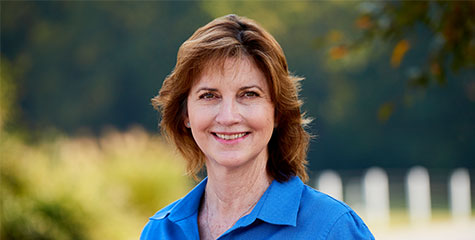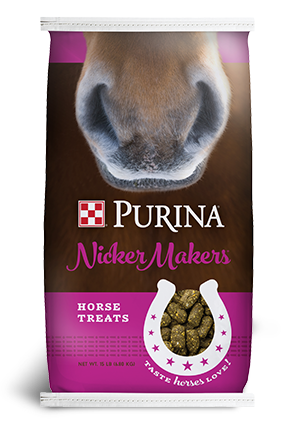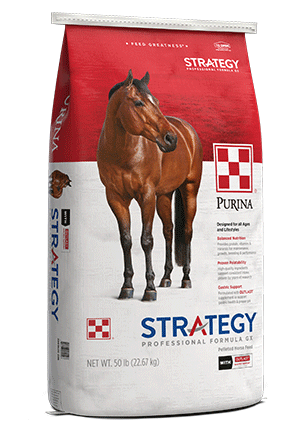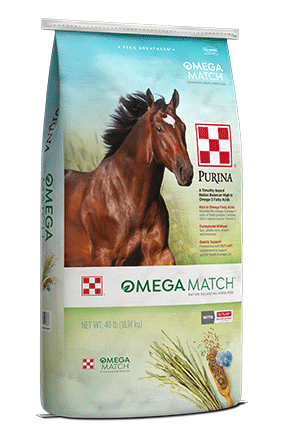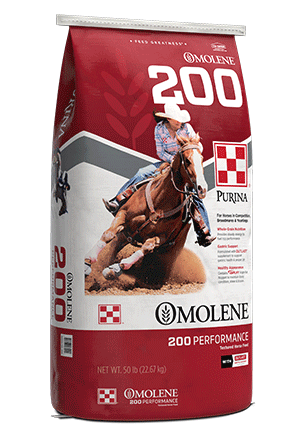
Nutritional Needs of the Suckling Foal
Life Stage : Breeding & Growing
There is always a great deal of excitement surrounding the arrival of newborn foals.
Whether you are a manager of a large breeding operation or own one special mare, getting a healthy new foal on the ground is important. Nutritional management of the mare during the last three months of pregnancy has a significant impact on the health of the newborn foal. When the foal arrives, he will be approximately 10% of his mature weight and 60% of his mature height. Obviously, a tremendous amount of development has taken place during gestation. This development is made up primarily of protein and minerals, along with water, and this had to be supplied through the mare. Once the foal is born, nutrition of the mare still impacts his health and development.
Following birth, foals continue growing at a very rapid rate. Most foals will reach nearly 50% of their mature weight and 80% of their mature height by six months of age. This kind of growth and development requires a steady supply of good nutrition. During the first two to three months of the foal’s life, the primary nutrition source is mare’s milk. Mares produce an incredible amount of milk, 3 – 4% of their body weight each day. Therefore, it is important for foal development that the mare be fed adequate supplemental feeding to support the tremendous demands of lactation. However, even if the mare is fed the appropriate diet, mare’s milk alone will not support all the nutritional needs of the growing foal. Mare’s milk production peaks at about two months of lactation and then begins to decline. Not only does production decline, but nutrient content, especially trace minerals such as copper, is very low in mare’s milk. Consequently, by the time the foal is two-three months of age, mare’s milk and free-choice hay or pasture will fall short of meeting the growing foal’s requirements for important nutrients such as protein, energy, calcium, phosphorus, copper, zinc and other minerals and vitamins. It’s very important that the foal have access to a nutritionally balanced foal feed early in their development. It’s not advised to wait until weaning to supply supplemental feed to the foal. A good foal feed should contain very high quality protein to supply essential amino acids, such as lysine, and be adequately fortified with the proper balance of vitamins and minerals.
Foals will show interest in eating within the first couple weeks of life. They don’t eat a significant amount at first and are simply mimicking their mother’s behavior, but their intake will increase with age. The goal with supplemental feeding of the suckling foal is to make up the difference between what mare’s milk is providing and what the foal needs to grow to his genetic potential. This does not require free-choice feed for the foal. Instead, a good rule of thumb to follow is to feed one pound of a high quality foal feed (such as Purina® Ultium Growth®, Omolene® #300 or Strategy GX® horse feed) per month of age per day, while the foal is still nursing the mare. For example, a two-month-old foal should be eating two pounds of feed per day. Another way to figure this is to feed 1% of the foal’s body weight per day (1lb per 100lb of body weight). In free-choice situations, foals will often over eat and can begin gaining weight too fast, putting undue stress on an immature skeleton. This is especially true when the mare is an exceptionally good milker.
There are several approaches for offering supplemental feed to the foal; the choice will depend on the specific situation and goals for the foal. Feeding mares and foals individually offers the most precise method of offering supplemental feeding to the foal. In this manner, each mare and foal receives exactly the amount of feed they need. However, many farms don’t have the labor or the facilities to be able to do this. Instead, they will either build a creep feeder that foals can access but mares cannot, or mares and foals will just be fed together. Creep feeders, must be monitored to make sure mares can’t get in and that mares or foals can’t get injured around them. Also, foals must be grouped by age and fed amounts appropriate for their age. If you put four month olds in with one month olds, the older foals will often eat their own feed as well as two or three other foals’ portions and the younger foals may get shorted.
When mares and foals are fed together, it is important that the mares and foals be sorted according to age of the foal and body condition of the mare. Otherwise, some mares and foals will get more than they need and others will not get enough. It is also important that the feed troughs are at a height the foal can comfortably reach, and there must be plenty of space available for all mares and foals to get to the troughs and eat at the same time. While this approach doesn’t provide the control over intake that individual feeding does, feeding mares and foals together can be a workable situation. If mares and foals are to be fed together, they must all eat a feed that is balanced to support foal growth, such as the Purina feeds mentioned previously. In addition, enough feed must be available to support the mare’s needs, plus the one pound per month of age per day for the foal.
Foals that are eating a high quality foal feed can be weaned by four months of age with no detriment to their growth and development. At that point, it can be more cost effective for the owner and more nutritionally accurate for the foal to wean him and be able to completely control his nutritional intake. Once the foal is weaned, the mare can be put back on maintenance level rations, which are often half of what she was requiring during lactation. The foal should stay on the foal feed, but intake should be increased to 1.5 – 2.5% of body weight, depending on the feed, quality of hay or pasture available and the goals for the foal.
Whether you are a manager of a large breeding operation or own one special mare, getting a healthy new foal on the ground is important. Nutritional management of the mare during the last three months of pregnancy has a significant impact on the health of the newborn foal. When the foal arrives, he will be approximately 10% of his mature weight and 60% of his mature height. Obviously, a tremendous amount of development has taken place during gestation. This development is made up primarily of protein and minerals, along with water, and this had to be supplied through the mare. Once the foal is born, nutrition of the mare still impacts his health and development.
Following birth, foals continue growing at a very rapid rate. Most foals will reach nearly 50% of their mature weight and 80% of their mature height by six months of age. This kind of growth and development requires a steady supply of good nutrition. During the first two to three months of the foal’s life, the primary nutrition source is mare’s milk. Mares produce an incredible amount of milk, 3 – 4% of their body weight each day. Therefore, it is important for foal development that the mare be fed adequate supplemental feeding to support the tremendous demands of lactation. However, even if the mare is fed the appropriate diet, mare’s milk alone will not support all the nutritional needs of the growing foal. Mare’s milk production peaks at about two months of lactation and then begins to decline. Not only does production decline, but nutrient content, especially trace minerals such as copper, is very low in mare’s milk. Consequently, by the time the foal is two-three months of age, mare’s milk and free-choice hay or pasture will fall short of meeting the growing foal’s requirements for important nutrients such as protein, energy, calcium, phosphorus, copper, zinc and other minerals and vitamins. It’s very important that the foal have access to a nutritionally balanced foal feed early in their development. It’s not advised to wait until weaning to supply supplemental feed to the foal. A good foal feed should contain very high quality protein to supply essential amino acids, such as lysine, and be adequately fortified with the proper balance of vitamins and minerals.
Foals will show interest in eating within the first couple weeks of life. They don’t eat a significant amount at first and are simply mimicking their mother’s behavior, but their intake will increase with age. The goal with supplemental feeding of the suckling foal is to make up the difference between what mare’s milk is providing and what the foal needs to grow to his genetic potential. This does not require free-choice feed for the foal. Instead, a good rule of thumb to follow is to feed one pound of a high quality foal feed (such as Purina® Ultium Growth®, Omolene® #300 or Strategy GX® horse feed) per month of age per day, while the foal is still nursing the mare. For example, a two-month-old foal should be eating two pounds of feed per day. Another way to figure this is to feed 1% of the foal’s body weight per day (1lb per 100lb of body weight). In free-choice situations, foals will often over eat and can begin gaining weight too fast, putting undue stress on an immature skeleton. This is especially true when the mare is an exceptionally good milker.
There are several approaches for offering supplemental feed to the foal; the choice will depend on the specific situation and goals for the foal. Feeding mares and foals individually offers the most precise method of offering supplemental feeding to the foal. In this manner, each mare and foal receives exactly the amount of feed they need. However, many farms don’t have the labor or the facilities to be able to do this. Instead, they will either build a creep feeder that foals can access but mares cannot, or mares and foals will just be fed together. Creep feeders, must be monitored to make sure mares can’t get in and that mares or foals can’t get injured around them. Also, foals must be grouped by age and fed amounts appropriate for their age. If you put four month olds in with one month olds, the older foals will often eat their own feed as well as two or three other foals’ portions and the younger foals may get shorted.
When mares and foals are fed together, it is important that the mares and foals be sorted according to age of the foal and body condition of the mare. Otherwise, some mares and foals will get more than they need and others will not get enough. It is also important that the feed troughs are at a height the foal can comfortably reach, and there must be plenty of space available for all mares and foals to get to the troughs and eat at the same time. While this approach doesn’t provide the control over intake that individual feeding does, feeding mares and foals together can be a workable situation. If mares and foals are to be fed together, they must all eat a feed that is balanced to support foal growth, such as the Purina feeds mentioned previously. In addition, enough feed must be available to support the mare’s needs, plus the one pound per month of age per day for the foal.
Foals that are eating a high quality foal feed can be weaned by four months of age with no detriment to their growth and development. At that point, it can be more cost effective for the owner and more nutritionally accurate for the foal to wean him and be able to completely control his nutritional intake. Once the foal is weaned, the mare can be put back on maintenance level rations, which are often half of what she was requiring during lactation. The foal should stay on the foal feed, but intake should be increased to 1.5 – 2.5% of body weight, depending on the feed, quality of hay or pasture available and the goals for the foal.

